Results 3,301 to 3,310 of 12096
Thread: Anandtech News
-
10-03-13, 10:30 AM #3301
Anandtech: R9-290X Preordering Begins Today
Hot on the heels of AMD’s 2014 GPU Product Showcase, along with details of the upcoming 2x0 AMD GPUs being launched, AMD was coy about the headline product, the Hawaii based R9-290X.  Aside from over six billion transistors, having 4GB of memory and quoting a bandwidth of over 300 GB/sec, the only other salient piece of information released was that today is the pre-order date.  To that extent we have observed the following with online e-tailers:
OverclockersUK is offering a pre-order deposit of £99 which will guarantee a card at launch.  Final pricing is not yet announced, there will be more to pay at a later date when pricing is confirmed.  This is the BF4 Edition, and OCUK have several hundred units up for grabs with an ETA of 31/10/13 (31st October in UK speak), and OCUK will have BF4 editions of Sapphire, HIS, ASUS, GIGABYTE and MSI cards, though at the minute there is no guarantee which one you may receive.  Middle-to-end of October customers will be contacted via email at which point they can call to select the brand pay the additional money.  If you are unhappy with the launch pricing or have changed your mind, deposits will be refunded.
Swedish etailer Webhallen has the ASUS BF4 Premium bundle up for 9999kr (SEK), which includes Swedish taxes.  Certain websites have done the conversion direct and got a ludicrously high $1575 equivalent, but without Sweden’s 25% tax rate this comes to 8000kr, or $1262.  This card was up at 7299kr ($920 USD without tax), making it still rather expensive.
TechPowerUp caught Newegg listing up both the MSI and Sapphire branded reference cards (now the XFX too), and although the pricing is listed as ‘coming soon’, a quick dig around the HTML source code lists the card at $730 excluding taxes.  We are waiting the final pricing to be fully listed and will update with details, although it is suggested that this is for the full BF4 premium edition – the regular edition may be cheaper.
For Sweden, the retailer netonnet.se is currently listing the card for 9999kr, the same as Webhallen. Interestingly enough we also get some specifications: 512-bit GDDR5, 111mm x 277mm x 48mm dimensions and a 500W PSU recommended minimum.
We will update this post as more retailers initialise their pre-orders.  The latest details on pre-orders seem to be coming from the @AMDRadeon twitter feed.
Gallery: AMD Radeon R9 290XR9-290X Pre-Orders Retailer Edition Price / ETA OverclockersUK
(UK)BF4 Edition Preorder
(Sapphire, HIS, ASUS,
GIGABYTE, MSI)£99 deposit
ETA 31st Oct 2013Webhallen +
NetonNet.se
(Sweden)ASUS BF4 Edition 9999kr
($1262 excl. tax)Newegg
(US)MSI BF4 Edition
(XFX and Sapphire also listed)$730
(from HTML, still unlisted)


There are set to be two different versions of the R9-290X available for preorder – the standard edition which contains just the card as well as the Never Settle bundle, and the BF4 Edition which has a BF4 Premium key.  All arrows point to BF4 standard edition being part of the Never Settle bundle in due course, although this is yet to be confirmed.

More...
-
10-03-13, 02:30 PM #3302
Anandtech: QNAP Launches SAS-Enabled Turbo NAS Units, Updates QTS 4.0 OS
QNAP is on a roll lately, with the launch of five new business-class Turbo NAS models supporting both SAS and SATA drives. These models are all rackmounts. While the TS-EC1679U-RP and TS-EC1279U-RP support both 2.5" and 3.5" SAS / SATA 6 Gbps drives, three (SS-EC2479U-SAS-RP, SS-EC1879U-RP and
SS-EC1279U-SAS-RP) are 2.5"-only high-density models with 24, 18 and 12 bays respectively.
All the new models are equipped with quad-core Xeon processors running at 3.4 GHz (the Xeon E3-1275, in all probability), 8GB of DDR3 ECC RAM and are 10 GbE-ready. SSD caching support is also available for improved IOPS in virtualization and data-center deployments. Scalability up to 400 TB is also advertised with support for the QNAP RAID expansion enclosures (REXP-1600U-RP and REXP-1200U-RP). The solutions carry certifications from all major virtualization solutions. Hop on to the source link for detailed specifications of the new models.
In other QNAP news, the QTS 4.0 Turbo NAS operating system was also updated recently to include support for business class models (the previous QTS 4.0 version indicated compatibility with the home-class models only). Some of the interesting features in QTS 4.0 include flexible volume management (the concept of a straoge pool that allows for aggregation of multiple RAID groups of different levels), proactive data protection (in terms of error recovery schemes), updated hypervisor offload features for improved virtualization experience, SSD caching support and SMB 2.0 support. It must be noted that the
SSD caching function is not available for the TS-x69 series.

More...
-
10-03-13, 05:00 PM #3303
Anandtech: The Humble Weekly: Nordic Games
Looking for some more "oldies but goodies" to pass your time? The Humble Bundle has a new weekly sale up, and as usual it's $1 minimum to get the core collection of games, with $6 or more unlocking additional titles. This week's weekly sale comes courtesy of Nordic Games, an Austrian publisher that has acquired the rights to additional titles by purchasing JoWood Entertainment and DreamCatcher Interactive. Many of the titles in this collection were well received when they first appeared, and quite a few are still worth playing. Here's the rundown of the games, starting with the five games you’ll receive for any donation over $1, in order of increasing age:
- Red Faction: Armageddon (June 2011, 75% Metacritic)
- Supreme Commander (February 2007, 86% Metacritic)
- Supreme Commander: Forged Alliance (November 2007, 81% Metacritic)
- The Guild 2 (October 2006, 61% Metacritic)
- Neighbors from Hell Compilation (September 2003, 69% Metacritic)
Obviously the big names there are Red Faction and Supreme Commander, with the other two games coming along for the ride. We briefly used Supreme Commander as a benchmark way back when, and at the time of launch it was relatively demanding on CPUs and GPUs. These days, I suspect you can max out the settings on any moderate desktop without too much trouble, and even laptops with iGPUs should run all of these games at medium or higher settings. The four additional games you get for a donation over $6 are:
- Painkiller: Hell and Damnation (October 2012, 64% Metacritic)
- Darksiders II (August 2012, 81% Metacritic)
- SpellForce II: Faith in Destiny (June 2012, 55% Metacritic)
- Gothic 4: ArcaniA (October 2010, 63% Metacritic)
As usual, you can specify how your donation should be distributed, including donating any or all of it to charity (Child’s Play or American Red Cross), the developers (Nordic Games), or the Humble Bundle. Note that all of the games (except for Neighbors from Hell) are only available via Steam, and they’re for Windows platforms. Looking at the Metacritic scores, you can see that about half of the games fall into the “worth checking out” score range, and the extremely low prices make even the flawed titles potentially enjoyable. To quickly go through the list, let’s start with the “maybe” games.
I’d give The Guild 2 (Real-time Strategy, sort of) and Neighbors from Hell (Strategy/Puzzle/Game Show) a pass, just because they didn’t rate highly at launch and 7-10 years isn’t likely to have improved things. ArcaniA (Role-Playing) on the other hand didn’t score so highly, but as a “poor man’s Elder Scrolls” I’d at least give it a shot if you’re looking for another RPG to pass the hours. Painkiller: Hell and Damnation (First-Person Shooter) is a follow-up to the much better original, and the series has been in a slide it seems with the latest Redemption and Recurring Evil only giving us more of the same. SpellForce II: Faith in Destiny (RTS/RPG) is an expansion that took too many years before release, and didn’t do enough in the interim to warrant much acclaim.
Moving on to the better (or at least higher rated) games, Red Faction: Armageddon (Third-Person Shooter) is the fourth full game in the series that features destructible environments. The first time you blow up a building and watch it tumble to the ground, it’s awesome! The hundredth time? Not so much. Supreme Commander and its expansion are highly acclaimed RTS titles from Gas Powered Games, or if you go back further, from Chris Taylor of Total Annihilation fame. They present both a high level tactical view of the action as well as the ability to zoom into a low level strategic view; many people loved (and still love) the games, and they’re definitely worth checking out if you haven’t already.
Last on the list, Darksiders II is a console-style action/platform/fighting game and as a relatively recent release it’s potentially the best title in the list. You can chalk that up to bias, but it’s “good” fun playing as one of the four horsemen of the apocalypse. It still sells for $50 on Steam, so just on its own merits it’s worth the price of admission.
A fried once told me I'm like a ten pound canary: "CHEEEEEEP!" Guilty as charged.
Gallery: The Humble Weekly: Nordic Games






More...
-
10-03-13, 07:00 PM #3304
Anandtech: Dell Updates Venue Line of Tablets
Yesterday Dell announced their latest mobile products, with major updates to their tablet and laptop offerings. Starting with the Venue tablets, dell has four new models available on October 18: the Venue 7, Venue 8, Venue 8 Pro, and Venue 11 Pro. The two Pro models run Windows 8.1 with Intel Atom Z2760 (Clover Trail) processors, while the Venue 7 and 8 will run Android 4.2.2 and will also use Intel Atom SoCs.
Starting with the Venue 7, Dell is targeting a very low price point of $150. Despite the low price, you won’t be sacrificing on features or performance, as you still get a Z2560 SoC (1.6GHz, dual-core, PowerVR SGX 544MP2 GPU), 16GB eMMC storage, and 2GB LPDDR2 RAM. There’s no mention of battery life, but the 15.5Wh battery should prove competitive with other 7-inch tablets. Other features include an IPS 1280x800 display, dual-band 802.11n WiFi (presumably 150Mbs, but it could be 300Mbps), Bluetooth 4.0, GPS support, and optional 3G/HSPA+ mobile broadband. The Venue 7 includes a VGA front-facing camera and a 3MP rear-facing camera, so that’s one area that’s not quite at the same level as you might find on other tablets, but for Facebook and social media photos it should still be sufficient. I/O ports consist of a MicroSD card reader (SD/SDHC/SDXC up to 32GB supported), micro-AM USB 2.0, a headphone/microphone combo jack, and an optional 3FF micro-SIM slot (on 3D models). The dimensions are 118mm x 193mm x 9.6mm and it weighs 234g (0.52 lbs.), so it’s slightly shorter than the Nexus 7 but a bit thicker and over 50g lighter.
Moving up to the Venue 8, most of the core functionality remains the same as the Venue 7, but obviously the display is slightly larger and the chassis is thus bigger as well. The SoC gets an upgrade to the Atom Z2580 (2.0GHz, dual-core, PowerVR SGX 544MP2), storage options consist of 16GB or 32GB eMMC, and RAM remains at 2GB LPDDR2. All of the connectivity options are the same as the Venue 7, and the battery is the same 15.5Wh capacity, so battery life will likely be a bit less on the Venue 8. Dimensions are 130mm x 212mm x 9.8mm with a weight of 292g (0.64 lbs.). Both the Venue 7 and 8 tablets are also available with a Targus Stylus from Dell, but that’s a stylus that works with any capacitive touchscreen device so it’s nothing special. The Venue 8 has a price of $180 (presumably for the 16GB version), and it will be available in red or black.
Shifting over to the Windows 8.1 side of things, the Venue 8 Pro is perhaps the first in what will likely be a long line of affordable Windows 8.1 tablets. Dell lists a starting price of $300, which is pretty impressive considering you still get an Intel Atom Z3740D SoC (quad-core, 1.8GHz, Intel HD Graphics); you can read more about the Bay Trail SoCs in our Bay Trail Preview. The Venue 8 Pro will be available in 32GB and 64GB models, with 2GB single-channel DDR3L-RS 1600MHz RAM. The display is a 1280x800 IPS panel, WiFi is 2x2:2 dual-band 802.11n (hooray!) with Bluetooth 4.0 and optional HSPA+ or 4G LTE/HSPA/EVDO mobile broadband, depending on the market. The battery is an 18Wh capacity (no word on battery life), with a 10W AC adapter. Front- and rear-facing cameras are included, this time a 1.2MP front and 5MP rear camera. Connectivity and IO ports consist of micro-AB USB 2.0, a headset combo port, 3FF micro-SIM (optional), and a microSD card slot (SD/SDHC/SDXC up to 64GB). The Venue 8 Pro also includes an active stylus. Dimensions for the Venue 8 Pro are slightly different than the Venue 8, so they’re definitely not using the same chassis: 130mm x 216mm x 9mm, with a weight of 395g (0.87 lbs.) There’s also an optional keyboard and protective cover available, and the Venue 8 Pro will come in red or black.
The final new Venue product announced is the big brother to the Venue 8 Pro, the Venue 11 Pro. This is more of a full-blown Ultrabook/tablet hybrid, with a 10.8-inch 1920x1080 display. Processor options are much more varied as well, consisting of the Atom Z3770 on the low end (2.4GHz quad-core Bay Trail) and moving up to four Haswell processor choices: Pentium 3560Y (1.2GHz dual-core, HD Graphics), Core i3-4020Y (1.5GHz dual-core, HD Graphics 4200), Core i5-4210Y (1.5-1.9GHz dual-core, HD Graphics 4200), and Core i5-4300Y (1.6-2.3GHz dual-core, HD Graphics 4200). I’m really curious about the amount of overlap between the Bay Trail and Haswell models, as there are numerous cases where it looks like Dell has two completely different designs and the only thing they share is the display and a few other features.
Storage options are full SSD this time as well, with 32GB, 64GB, 128GB, and 256GB drives available; likewise memory can be either 2GB DDR3-1333 or 4GB/8GB DDR3-1600 (presumably the higher memory capacities are dual-channel and are for the Haswell variants). Connectivity options get a slight boost as well, with either 802.11n dual-band 300Mbps WiFi or Intel 7260AC 867Mbps, Bluetooth 4.0, NFC (Near Field Communication), and 3G/HSPA+ or 4G/HSPA/EVDO mobile broadband (the latter being for the US market). Hardware TPM is included, the battery is a 30Wh or 37Wh depending on the configuration, with the 37Wh apparently being swappable (again, I’d assume the larger battery is for the Haswell models), and it comes with a 24W AC adapter. The cameras are a 2MP front and 8MP rear, ports include a full-size USB 3.0, a headset combo jack, micro HDMI, and microSD (SD/SDHC/SDXC up to 64GB). A stylus is again included (or optional?), and while Dell doesn’t specifically state this it appears to be an active stylus.
Dimensions are 177mm x 280mm x 10.2mm / 15.4mm; the thicker chassis belongs with the 37Wh battery and the Haswell CPUs I’d guess. Starting weight is listed as 726g (1.6 lbs.), but that’s obviously not going to be for the thicker models with the larger battery capacity. Dell has an optional mobile keyboard attachment that also serves as a screen cover (but with no additional battery capacity), or there’s a Tablet Desktop Dock that adds an additional USB 3.0 port along with dual display outputs. Pricing starts at $500, but I’d expect the higher-end Haswell models to push well into the $1000+ range. Dell didn’t provide pricing information for the keyboard or desktop dock.
Gallery: Dell Updates Venue Line of Tablets






More...
-
10-03-13, 11:30 PM #3305
Anandtech: The AnandTech Podcast: Episode 26
On the list for today is Surface 2/Pro 2, Galaxy Note 10.1 2014 Edition, Galaxy Gear, Galaxy Note 3, Cheating in Android Benchmarks and a preview of our 2013 iMac review.
The AnandTech Podcast - Episode 26
featuring Anand Shimpi, Brian Klug
iTunes
RSS - mp3, m4a
Direct Links - mp3, m4a
Total Time:  1 hour 44 minutes
Outline h:mm
Surface 2 - 0:00
Samsung Galaxy Note 10.1 2014 Edition - 0:11
Samsung Galaxy Gear - 0:35
Samsung Galaxy Note 3 - 0:46
Cheating in Android Benchmarks - 0:58
iPhone 5s Camera - 01:26
The new iMac - 1:31

More...
-
10-03-13, 11:30 PM #3306
Anandtech: Dell Updates 2013 Line of XPS Laptops with Ultra-High Resolution Displays
Going along with the updates to their Venue tablets, which we just posted about, yesterday Dell also announced updates to their XPS line of laptops. There are three new XPS models to cover, all with Haswell processors and all with new designs relative to last year’s models. What will be particularly interesting is the use of ultra-high resolution panels on two of the models, with resolutions that match or in the case of the XPS 15 even surpass the MacBook Retina displays.
Checking in with the ultrathin Ultrabook category is the new XPS 11, which apparently takes over as a hybrid device for the outgoing XPS 12 Duo. The design is highly reminiscent of the Lenovo Yoga, with the hinge allowing 360 degrees of travel so that you can flip the screen around to turn your laptop into a tablet. This requires fewer moving parts than the XPS 12, but at the same time it leaves the keyboard exposed when you’re in tablet mode. Dell’s solution is to use a solid surface keyboard – as in, no key travel apparently. I’m not sure how that will feel, but it’s one possible answer to the hybrid device conundrum. Dell also uses premium materials with a combination of machined aluminum and carbon fiber for the chassis and a silicone palm rest.
Processor options consist of Intel’s Y-series of Haswell CPUs: Core i3-4020Y (1.5GHz dual-core, HD Graphics 4200), Core i5-4210Y (1.5-1.9GHz dual-core, HD Graphics 4200), and Core i5-4300Y (1.6-2.3GHz dual-core, HD Graphics 4200) – those are all 11.5W TDP, 6W SDP (Scenario Design Power) parts. Interestingly, those are the same CPU options as the Haswell-based Dell Venue Pro 11 tablet, minus the Bay Trail Z3770 and the Haswell Pentium 3560Y. Memory is limited to 4GB dual-channel DDR3L-RS 1600MHz onboard, with no option to upgrade. Storage will be pure SSD, with 80GB, 128GB, or 256GB drives available.
Perhaps most interesting will be the display, a QHD (2560x1440) 11.6” IPS touchscreen boasting 400-nit brightness and a 72% color gamut with an 800:1 contrast ratio. That’s essentially the same resolution as the MacBook Pro 13 Retina, but sadly with a 16:9 aspect ratio instead of 16:10, and in an 11.6” size instead of 13.3”. Needless to say, you won’t want to run at native resolution without scaling, but the ultra fine DPI should allow for the use of other resolutions without problem, or there’s always 1280x720 with pixel doubling. It will be interesting to see how Microsoft handles the scaling question in comparison to OS X; Apple chose to render lower non-native resolutions at 2x and then use supersampling to fit them to the available resolution, while “native” handled text and images differently. Windows 8.1 is not doing any supersampling that I’m aware of, so I’m not sure what non-native content will look like. The panel is also protected by Gorilla Glass NBT, Corning’s latest that promises to be even more durable.
The remaining specs include a 40Wh battery (no word yet on battery life), backlit keyboard, Intel Wireless-AC 7260 WiFi with Bluetooth 4.0, NFC, and an HD webcam. IO ports consist of two USB 3.0 with PowerShare, an HDMI port, a headset combo jack, and an SD/SDIO/SDXC card reader. The XPS 11 is extremely thin, no doubt helped by the lack of key travel on the keyboard, measuring 30mm x 201mm x 11-15mm (11.8” x 7.9” x 0.4-0.6”), with a weight of 1.13kg (2.5 lbs). Availability is scheduled for November, with a starting price of $1000.
Next up is the XPS 13, which appears to be largely the same as the XPS 13 we reviewed earlier this year, only now with Haswell processor options. Dell claims that they’ve fit a 13.3” display into a chassis that’s nearly the same size as 11.6” Ultrabooks, and compared to the above XPS 11 that’s pretty accurate – the XPS 13 measures 316mm x 205mm x 6-18mm (12.4” x 8.1” x 0.2-0.7”), so it’s about half an inch wider and a quarter inch deeper. The cynic in me would of course point out that there’s still an awful lot of bezel on the top and bottom of the display, and while it’s great that the XPS 13 is nearly the same size as the XPS 11, that means that the XPS 11 is going to have even more bezel real estate by comparison. (If you’re curious about the math, the diagonal of the XPS 13 is 14.8” while the diagonal of the XPS 11 is 14.2”, so 1.6” of bezel diagonal vs. 2.6” of bezel diagonal.) The chassis of the XPS 13 is machined aluminum with carbon fiber on the bottom, and a magnesium alloy palm rest with soft touch paint.
Moving over to the internal components, the XPS 13 uses Intel’s U-series Haswell processors, with four choices: Core i3-4010U (1.7GHz dual-core, 15W), Core i5-4200U (1.6-2.6GHz dual-core, 15W), Core i7-4500U (1.8-3.0GHz dual-core, 15W), and the Core i7-4650U (1.7-3.3GHz dual-core, 15W). The first three options all use a GT2 HD 4400 GPU with 20 EUs, while the i7-4650U sports a GT3 HD 5000 40 EU iGPU. Of course, the 15W TDP is still going to put a serious crimp on the graphics performance, so don’t expect any miracles. Dell also notes that the i7-4650U is only available on the LE model, which is apparently a higher spec variant of the XPS 13.
Most of the remaining items are going to be unchanged from the XPS 13 from earlier this year – 4GB or 8GB RAM, 128GB or 256GB SSD, 55Wh 6-cell battery, 45W AC adapter, a backlit spill-resistant keyboard, two USB 3.0 ports with PowerShare, mini-DisplayPort, and a headset combo jack. Dell does upgrade the WiFi to Intel’s Advanced-AC 7260 with Bluetooth 4.0. The screen is also unchanged, though we were quite happy with the 1920x1080 IPS touchscreen already so no complaints there. Dell states that the new model will deliver better battery life, which is expected thanks to Haswell, but we don’t know precisely what level of battery life we’ll get yet. Availability on the new XPS 13 is also scheduled for November, with pricing starting at $1000.
Last but certainly not least is the new XPS 15, and this one is a doozy! There will be two display options on the XPS 15, a 15.6” 1920x1080 touchscreen (nice, but…) or a 15.6” QHD+ 3200x1800 touchscreen is available as an upgrade (I believe both are IPS, but Dell doesn’t specifically say). As with the XPS 11, running native without scaling isn’t likely to result in a great experience unless you have uber-vision, but the extremely fine DPI should make other resolutions work nicely as well, with 1600x900 being exactly doubled in both dimensions. Other than the display, this is basically a scaled up version of the XPS 13 with a few tweaks. It has a machined aluminum chassis and carbon fiber base, but it gets the silicone palm rest and Gorilla Glass NBT of the XPS 11.
On the performance side of the spectrum, the XPS 15 also gets scaled up. Dell offers two CPU options: the i5-4200H (2.8-3.4GHz dual-core, 47W TDP, HD Graphics 4600) or the i7-4702HQ (2.2-3.2GHz quad-core, 37W TDP, HD Graphics 4600). And no, you’re not going crazy: the quad-core part is a lower TDP than the dual-core part, but Dell makes up for it by including a GeForce GT 750M 2GB GDDR5 with the quad-core configuration. Memory is either 8GB or 16GB of DDR3L-1600 SO-DIMMs, and storage options include 500GB or 1TB HDD + 32GB SSD cache (Intel SRT), or a 512GB pure SSD configuration.
With a larger chassis that measures 372mm x 254mm x 8-18mm (14.6” x 10” x 0.3-0.7”) and a weight of 2.01kg (4.44 lbs.), there’s also more room for expansion ports. The XPS 15 has three USB 3.0 ports and one USB 2.0 port (all with PowerShare), a mini-DisplayPort, full-size HDMI, Gigabit Ethernet, headset combo jack, and SD/SDIO/SDXC reader. As with the other two XPS laptops, Waves MaxxAudio Pro helps with the speakers and sound. The keyboard is backlit and spill-resistant, and the touchpad has a glass surface with the usual gesture support. Intel’s Advanced-AC 7260 is also present for WiFi duties, with Bluetooth 4.0 support, and that means the XPS 15 (and 11 and 13) are now WiDi 3.0 ready; NFC support is also present, and TPM support is available on all of the new XPS models to make them “IT friendly”.
Interestingly, the battery is a 61Wh built-in unit, and if you get the 512GB SSD configuration you also get a larger 91Wh built-in battery. Presumably that means the SSD is mSATA or M.2, and with no 2.5” HDD the extra room is used for additional battery cells. Unlike the other two XPS models above, the XPS 15 will go on sale October 18, with a starting price of $1500. Of course what we really want know is how much the model with the QHD+ display and 512GB SSD will cost; I suspect it will give Apple’s MacBook Pro 15 Retina a run for the money, but hopefully Dell will stay south of $2000.
Gallery: Dell Updates 2013 Line of XPS Laptops with Ultra-High Resolution Displays






More...
-
10-04-13, 08:30 AM #3307
Anandtech: The GeForce GTX 770 Roundup: EVGA, Gigabyte, and MSI Compared
Today we’re taking a look at our first customized GTX 770 cards, coming from from EVGA, Gigabyte, and MSI. All of these are semi-custom and fully custom cards pairing factory overclocks with custom coolers and custom software in an attempt to set themselves apart in what is a crowded field for video cards. How do these cards stack up, and is there a GTX 770 that shines above all of the others? Today we'll find out.

More...
-
10-04-13, 07:00 PM #3308
Anandtech: Valve Releases Specs for Prototype Steam Machine
Last week we analyzed Valve’s announcement of their forthcoming SteamOS, Steam Machines, and Steam Controller. There are still a lot of unknowns, but today Valve released the details for their prototype Steam Machine. When the actual Steam Machines begin shipping next year, it will be up to various system builders to decide exactly what configurations they want to ship, but the prototype system will give us a good idea of what to expect in terms of pricing and performance. Here’s what Valve will be shipping to the 300 beta testers in the next month or two – and note that there are going to be multiple CPU and GPU configurations:
Valve is covering a decent range of performance, from basic Core i3 processors up through the latest Haswell i5-4570 and i7-4770. Valve doesn’t specify the model of the Core i3 CPU, but assuming they’re using the same platform in all prototypes it stands to reason that it will be one of the i3 Haswell models listed in the table above. The only differences between the i3-4130 and i3-4340 are the clock speed (3.4 to 3.6GHz) and the iGPU (the 4310 has HD 4400 while the other two have HD 4600, but since they use GT2 and the max clock is 1.15GHz I’m not sure why Intel uses different model numbers). Unlike the i5 and i7, the Core i3 is also dual-core, so on titles that successfully leverage multiple threads (beyond two), it may be a bit slower.Valve Steam Machine Prototype Specifications Processors< Intel Core i7-4770 (4x3.5-3.9GHz, 8MB L3, 22nm, 84W)
Intel Core i5-4570 (4x3.2-3.6GHz, 6MB L3, 22nm, 84W)
Intel Core i3 (Not specified – i3-4130, i3-4330, or i3-4340?)Motherboard Unknown Memory 2x8GB DDR3-1600 Graphics GeForce GTX Titan (2688 CUDA cores, 837-876MHz, 6GHz GDDR5)
GeForce GTX 780 (2304 CUDA cores, 863-900MHz, 6GHz GDDR5)
GeForce GTX 760 (1152 CUDA cores, 980-1033MHz, 6GHz GDDR5)
GeForce GTX 660 (960 CUDA cores, 980-1033MHz, 6GHz GDDR5)Storage 1TB/8GB SSHD Power Supply 450W 80 Plus Gold
The bigger differences come on the GPU side of things. At the top of the ladder sits NVIDIA’s Titan GPUs, which is more horsepower than the vast majority of gaming PCs out there and arguably overkill. Even the GTX 780 is more than most of our readers likely have, but the GTX 760 and GTX 660 are far more reasonable. It’s worth pointing out that NVIDIA gets a universal pick over AMD GPUs, at least for now, but we’ll have to see if Radeon GPUs make it into shipping Steam Machines. NVIDIA has traditionally had better binary drivers for Linux, but with Valve now pushing the OS that could change.
Let’s quickly talk about pricing. Note that Valve’s statement mentions, “The hardware specs of [the retail Steam Machines] will differ, in many cases substantially, from our prototype.” There will be some Steam Machines likely priced close to $500, while others will probably cost $2000 or more. There’s a lot of wiggle room, but with a basic case and H81 motherboard the Core i3 + GTX 660 Steam Machine has a hardware cost of approximately $675 retail. Just the CPU and GPU alone at the high-end will set you back $1300+, with the total cost coming in around $1650. Ouch. And that’s not including a controller of any form.
Obviously the hardware manufacturers aren’t going to be paying retail prices for bulk orders, but even so there’s a long way to go before Valve’s Steam Machines would be even close to the pricing of the PS4 ($400) and Xbox One ($500). Okay, maybe the Xbox One is at least in reach, but only for the least expensive prototype Valve is sending out.
For what’s essentially a full-blown gaming PC, $600 is reasonable, but we have yet to see what the actual SteamOS experience will be like. There are rumors Valve will be building off Ubuntu (nothing confirmed that I know of), and just having a Linux kernel means it’s possible to run other Linux applications. Add a keyboard and mouse and if you’re willing to learn a new OS you should be able to do just about anything you need.
As noted in our original analysis, the bigger obstacle to overcome is the lack of native versions of so many games. Streaming means you would have to have a second gaming PC elsewhere in the house, and if you already have that I’m not sure even a $400 Steam Machine would be all that big a draw. Still, we haven’t been able to actually try out SteamOS yet, so we’ll withhold any judgment until it starts shipping.

More...
-
10-07-13, 03:01 AM #3309
Anandtech: 21.5-inch iMac (Late 2013) Review: Iris Pro Driving an Accurate Display
I have a confession to make. For the past year I’ve been using a 27-inch iMac as my primary workstation. I always said that if I had a less mobile lifestyle the iMac is probably the machine I’d end up with (that was prior to the announcement of the new Mac Pro of course). This past year has been the most insane in terms of travel, so it wasn’t a lack of mobility that kept me on the iMac but rather a desire to test Apple’s new Fusion Drive over the long haul.
It’s entirely possible to mask the overwhelmingly bad experience of a hard drive in a high performance machine by only sampling at the beginning of the journey. When the OS is a clean install, the drive is mostly empty and thus operating at its peak performance. Obviously Apple’s Fusion Drive is designed to mitigate the inevitable performance degradation, and my initial take on it after about a month of use was very good - but would it last?
I’m happy to report that it actually did. So today’s confession is really a two-parter: I’ve been using an iMac for the past year, and I’ve been using a hard drive as a part of my primary storage for the past year. Yeesh, I never thought I’d do either of those things.
This year the iMacs get incrementally better. Displays and resolutions are the same, but silicon options are a bit quicker, 802.11ac is on deck and the SSDs all move to PCIe (including Fusion Drive). As tempted as I was to begin my first look at the 2013 iMac evaluating the impact of going to faster storage, it was the entry-level model that grabbed my attention first because of a little piece of silicon we’ve come to know as Crystalwell.

More...
-
10-07-13, 02:01 PM #3310
Anandtech: Some Thoughts on Smartphone Region Locking
Recently, reports of Samsung region locking the Note 3 came out via Clove UK, which posted on its blog that the Note 3 would be completely unable to use a SIM card from a carrier outside of the region, and would not ship any Note 3 devices with a region lock outside of Europe.
Of course, while unprecedented in the smartphone industry, this sort of business has been happening for a very long time in the automobile industry, which has effectively banned grey importing to the US. While that isn't common knowledge, some may know that the Skyline GT-R is effectively banned from the US, which is a direct result of a ban on grey imports. The reason for all of this was a push by Mercedes-Benz USA to protect its dealer network and its own margins. In short, the story behind all of this is that grey imports were cutting into profit margins, as importers could easily take advantage of fluctuating exchange rates, and when all was said and done, going through an importer could net thousands of dollars in savings, all of which was effectively taken from the OEM. As a result, MBUSA and a coalition of other OEMs successful lobbied Congress to pass laws that made grey importing effectively impossible, which completely killed that industry.
While there are other possible justifications for region locking devices, looking to the past, it is evident that this move is done for similar reasons, albeit implemented at the software levels rather than enforced by law. While at first such a move threatened to have severe blowback due to the lockout of foreign SIMs for those traveling outside of the region intended for use, Samsung moved quickly to quell such fears, stating that the lock would only be for initial activation and that any region locked device would be able to be unlocked by a regional service center, however it seems that based upon multiple user reports, unlocked devices in certain regions have been completely locked out from using foreign SIMs. Recent information suggests that this lock is also shipping on many other unlocked devices that we're manufactured after July 2013, and such locks may arrive via OTA update for some devices. Due to their enormous marketshare and mindshare, Samsung is best placed to execute such a strategy, and stands to greatly increase margins from this move.
Even though Samsung is the first to do this in the smartphone industry, it is hard to say that such a move would not be pushed by other OEMs, as all would stand to profit from such region locking. While the automotive industry achieved this through legislation, it seems that smartphone OEMs are well-positioned to implement such features in software. While initial SIM locks would be easily bypassed by resellers, forcing the need to acquire an unlock code from a service center in the correct region would be extremely effective at killing grey market imports in the smartphone market, especially if the lock flag were in a partition with signature checks enforced like many carrier locks. It remains to be seen, however, whether the smartphone OEM would move in such a direction. While the automobile industry is nothing to be emulated, it is possible that the smartphone industry will follow in its footsteps.

More...
Thread Information
Users Browsing this Thread
There are currently 63 users browsing this thread. (0 members and 63 guests)











 Quote
Quote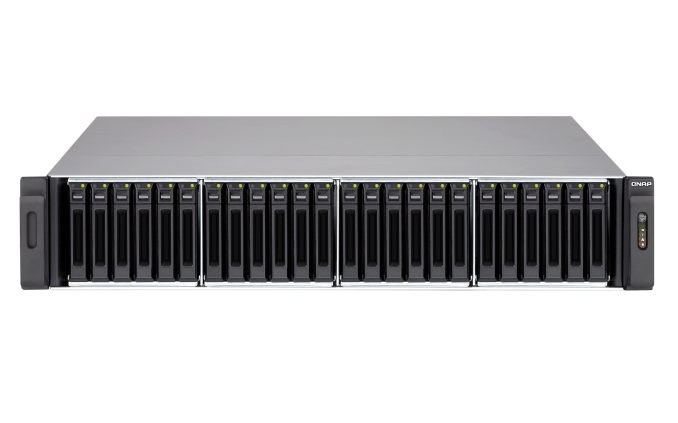


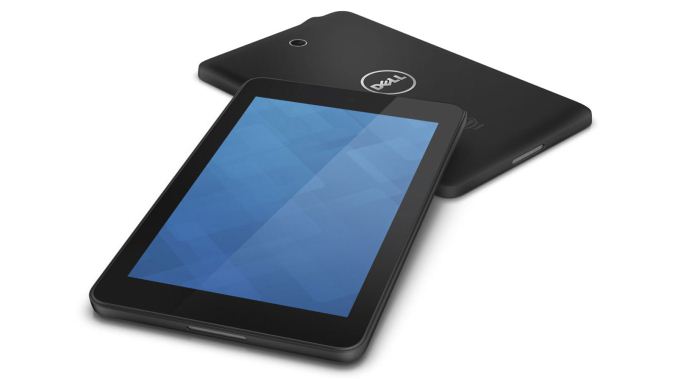
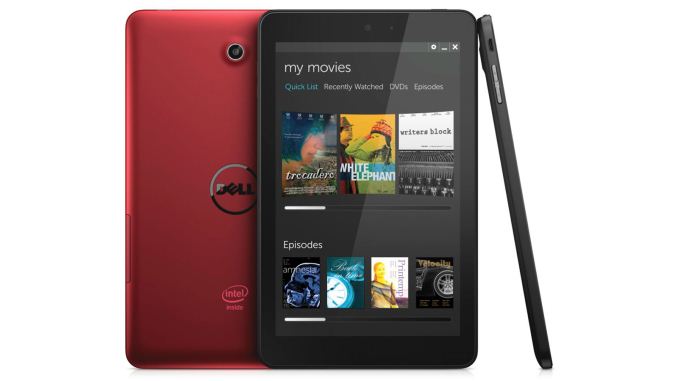

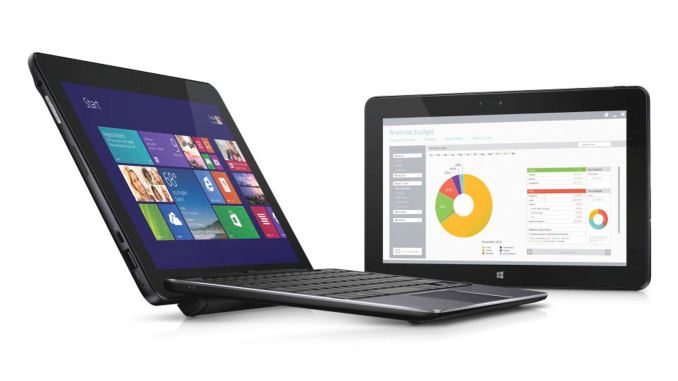

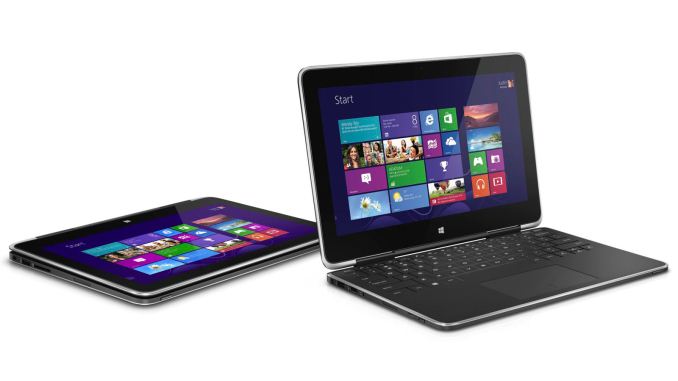
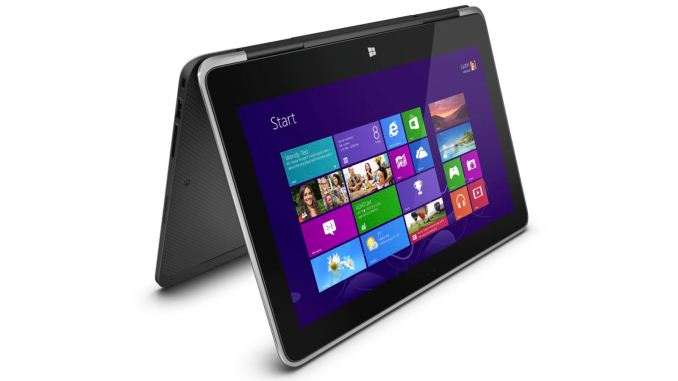




















Bookmarks